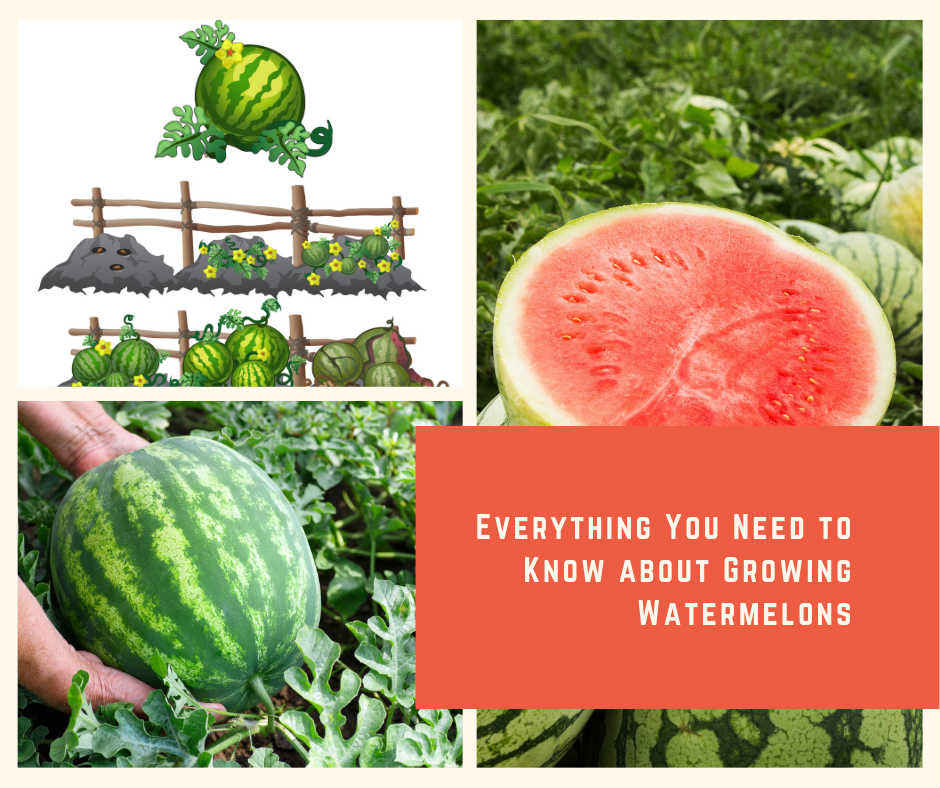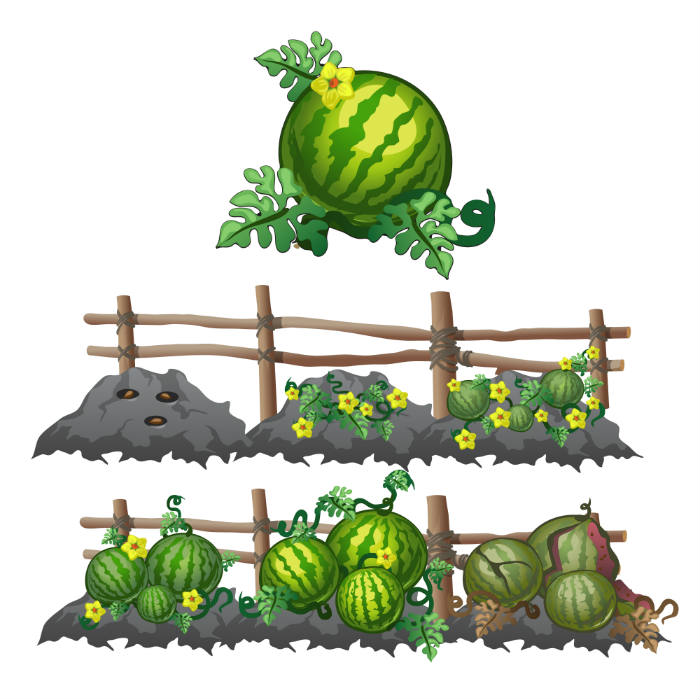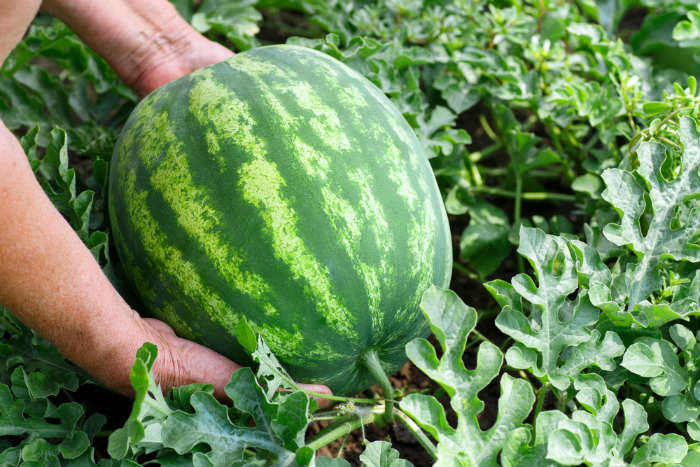Everything You Need to Know about Growing Watermelons
Nothing screams summer like biting into a juicy watermelon on a hot afternoon. Kids and adults alike love watermelons. Planting a hill or two of watermelons is simple; new and experienced gardeners alike can enjoy growing watermelon at home.
Watermelons are a warm season fruit that everyone loves. You can eat them sliced, in fruit salads, or as a jelly – seriously. Understanding the best growing conditions for watermelons make it easier for you to grow the fruits in your backyard garden.
Planting Watermelons
Watermelons grow well in almost any climate, but they do great in the south throughout the warmer seasons. For those in the north, you have to make sure you plant at the right time for success. Melons aren’t big fans with extreme heat or high humidity. Fungal diseases tend to wipe them out quickly when moisture is present.
When to Plant Watermelons
This fruit prefers warmer weather, and it needs a long growing season. The ground should be warm enough for the seeds to germinate and grow, with a soil temperature of at least 70 degrees F at planting time. You can get a jump start on planting seeds by covering the planting area with black plastic to warm up the soil faster.
Where to Plant Watermelons
Watermelons prefer to be in an area that sandy loam soil, but it can survive in other locations. When you pick where you’re going to grow watermelons, make sure you consider the space necessary. The vines and plants take up a lot of space.
Wherever you pick, make sure that the melons are going to be in full sun. Watermelons need to have an abundant supply of water and nutrients in the soil.
Starting Seeds Inside
If you live in the northern climates, your growing season might not be long enough, so starting the early varieties in the house is a smart idea. You can later transplant the seedlings outside into the ground. You don’t want to start them too early because watermelon seedlings don’t do too well when transplanted. Their roots are gentle and prefer not to be disturbed.
Plan to start the seeds two or three weeks before you want to put them out in the garden.
Planting Watermelons Outside
Now that your watermelons are ready to go outside, make sure you space them 2 to 3 feet apart. Also, put the rows 7 to 10 feet apart. These plants get huge with vines up to 20 feet in length. Before you plant, add some compost or composted cow manure to amend the soil.
You can either transplant your seedlings outside or direct sow seeds, depending on the length of your growing season. Sow seeds 1 inch deep and make sure that you keep the area well-watered until germination.
Plant the seeds in mounts or a fridge to help with draining. Melons don’t like wet feet. For those who have heavy clay soil, a raised bed is ideal. Mounds are great if you have poor soil quality because you can add all the compost and fertilizer right in the hill with the plants.
Growing Watermelon Vertically
You’re probably skeptical that this can work, but it does. For those who are limited with their space, you can grow watermelons on a trellis. You have to make sure you pick varieties that don’t get too large. A watermelon weighing 20 pounds won’t dangle well, but small melons grow well.
You will need a sturdy trellis and to train the tendrils to grow up the support system. Watermelon vines aren’t climbers, so this method takes time to develop. You also have to support the fruit as it grows. Some gardeners make slings from pantyhose to support the developing fruit. if you are lookign for more plants you can grow vertically this article may be of interest. 20 Garden Plants To Grow Vertically This Year
Taking Care of Growing Watermelons
In general, watermelons are relatively easy to plant to handle and grow in your garden. However, here are a few tips that let you know what watermelon plants require to develop and grow properly.
- These plants need a lot of water to stay healthy. You should often water, especially when it’s dry outside or in the middle of summer.
- Withhold water as the melons start to mature because it helps to intensify the sweetness.
- Watermelons can be heavy feeders because they grow to such huge extents. Use a balanced fertilizer that is high in nitrogen. You can side dress plants with a half a cup of balanced fertilizers – 5:10:5 works well. Plan the third application of fertilizer when the melons are set.
- Do your best to keep weeds at bay. Watermelons have short roots, so weeds pull the vital nutrients that they need away from the plant. The weeds also might disturb the shallow roots of the watermelon plant, so don’t let the weeds get started, if possible.
Harvesting and Storing Watermelons
Growing watermelons take at least 120 days from start to finish, so you have to pay attention to figure out if the watermelons are ready to harvest.
You’ll start to notice that the curly tendrils will turn brown and get crispy. The color of the melon begins to get duller, and the skin of watermelon gets hard. If you press your fingernail into the rind, it resists the penetration. Make sure to flip the melon over to see if the bottom where it sits in the soil is yellow. That means the watermelon is ripe.
Don’t just yank on the vine to remove the fruit. Use a cutting knife and cut as close to the fruit as possible. If you pull too hard, you might break the vine, which would kill any of the developing melons on the vine.
Gently brush off the dirt from the outside of the watermelon, but don’t wash with water. Put on a shallow box or with a newspaper in the bridge. Once you pick a watermelon, chill it before serving to ensure it has the best flavors. Cut melons can be covered with plastic wrap or aluminum foil and stored in the refrigerator.
 Home and Gardening Ideas At home and Gardening ideas we believe inspiring readers about homesteading, self sufficiency
Home and Gardening Ideas At home and Gardening ideas we believe inspiring readers about homesteading, self sufficiency








